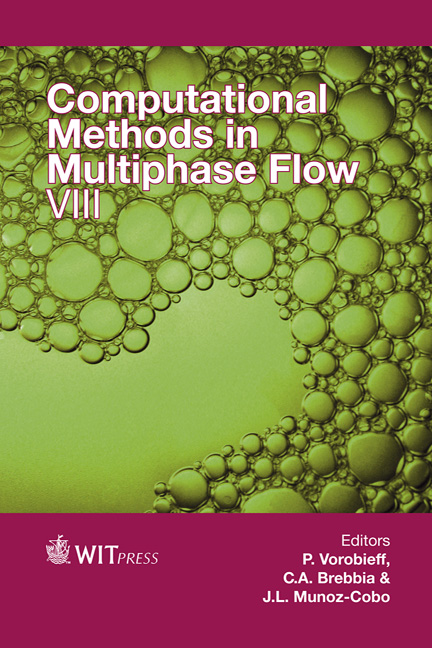Surfactant Concentration And Its Effect On The Flow Field Inside An Oil Droplet Rising In An Aqueous Medium: LIF And PIV Measurements
Price
Free (open access)
Transaction
Volume
89
Pages
10
Page Range
463 - 472
Published
2015
Size
735 kb
Paper DOI
10.2495/MPF150391
Copyright
WIT Press
Author(s)
A. C. Bishop, P. J. Thomas, P. Denissenko
Abstract
We explore the effects of adsorption of a fluorescent surfactant-like substance (Rhodamine-6G) to the interface of a droplet of mineral oil rising through a water-glycerol mixture with Re« 1. As Rhodamine-6G adsorbs to the interface it collects in a stagnant cap at the base of the droplet. This in turn impedes the internal flow of the droplet. Laser-Induced Fluorescence (LIF) and Particle Image Velocimetry (PIV) are used as measurement techniques to explore the effects of Rhodamine-6G adsorbing to the oil-aqueous interface.
LIF is used to observe the transport of surfactant (Rhodamine-6G) as it adsorbs to the front facing section of the droplet interface and desorbs in the wake behind the droplet. The LIF visualisation shows the accumulation of Rhodamine-6G at the rear of the droplet in the form of a cap, as well as the formation of a surfactant-depleted tail behind the droplet. This cap grows in size as the droplet rises and develops at different rates for different concentrations of Rhodamine-6G. PIV measurements are obtained to visualise the circulation inside the droplet and to measure the angle of the stagnant cap as the droplet rises, with these measurements being linked to the LIF results.
Keywords
interface, PIV, LIF, surfactant, adsorption, Rhodamine-6G, stagnant cap, oil droplet





